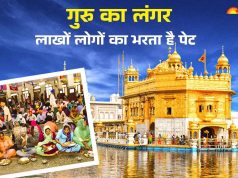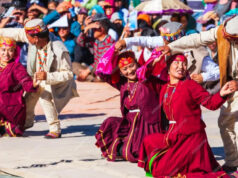Maharashtra has a robust Museum tradition. In fact the State is abode to one of the oldest Museums in India, the Central Museum in Nagpur, which was established in 1863. At present, there are 13 Government Museums in different parts of Maharashtra under the jurisdiction of Directorate of Archaeology and Museums, Government of Maharashtra. They display the historical development of Maharashtra by exhibiting various artefacts and art objects in their respective collections which are primarily collected through excavations, explorations and donations.
Speaking on the significance of the International Museum Day 2021, Dr. Mayur Thakare, Assistant Archaeologist, Directorate of Archaeology and Museums, Govt. of Maharashtra, said, “This year’s International Museum Day’s theme is about – ‘The Future of Museums : Recover and Reimagine’. As we know that COVID-19 pandemic has greatly affected the pattern of our formal interactions and gatherings. And it has a tremendous effect on the Museum Sector especially from the Private Sector as they depend on the revenue generated from entry fee, exhibition fee, courses etc. to run their establishment. It is in this situation that Science and Technology can play an important role by conceptualising and implementing various alternate methods of exhibition and display of the Museum collections to public. The museums are already using the technological concepts like the virtual and augmented reality, 3-D designs, models and prints, virtual tours of the Museums but they need to be further technology based to transform from the direct human interaction to the digital based interface.”
On the occasion of International Museum Day 2021 (18th May), Maharashtra Tourism presents a few of the lesser-known museums in the State that narrate the social and cultural history of the State:
New Palace Kolhapur
New Palace, Kolhapur, residence of Chhatrapati Shahuji Maharaj depicts an amalgamation of British and Hindu architecture. It exhibits a fine collection of descendants of Chhatrapati Shivaji Maharajji like costumes, weapons, games, jewellery, embroidery and paraphernalia such as silver elephant saddles. One of Aurangzeb’s swords are also displayed at the Museum. Another interesting feature is every glass here exhibits paintings that describes Chhatrapati Shivaji Maharaja’s life events. It represents the diverse interests, accomplishments, relations and lifestyles of the royal family of Kolhapur. The palace is surrounded by a lush garden, a beautiful lake and a zoo.
Raja Dinkar Kelkar Museum, Pune

Established by Dr. D. G. Kelkar, in 1962, it has a collection of 21,000 artefacts, belonging to different parts of the world, which were collected by Dr. D. G. Kelkar. He had built this museum as a tribute to his son, who died at young age of seven. It displays an impressive collection of musical instruments, Mughal lamps, antiques, and paintings from mythological epic Ramayana, Ganpati’s guns, Persian set of cards, pottery collection, and statues of Lord Ganesha, Lord Shiva and Goddess Parvati.
The museum’s collection depicts the skills of the Indian artists of the time, including the prominent works of Pandit Abhijeet Joshi. One of the key attractions of the museum is Mastani Mahal which displays luxurious décor, grand chandeliers and artistic paintings.
Sudhanva Ranade, Director of Raja Dinkar Kelkar Museum, said, “Dr Kelkar was an optician by profession and a poet by passion. He started collecting artefacts and objects of antique value out of his love for heritage and history,” He further added, “If one wants to know the culture and way of life of any country, museum is the best medium. Raja Dinkar Kelkar Museum showcase India’s rich culture and traditions, which was created through Dr. D. G Kelkar’s lifelong tireless efforts.”
The museum now offers virtual tours for the art and history enthusiasts.
Central Museum, Nagpur

The Nagpur Central Museum, popularly known as Ajab Bangla, is one of the oldest museums in India and Maharashtra. It hosts a vast array of sculptures, ancient inscriptions, paintings, Mughal and British weaponry, coins and pre-historic findings. The museum has an anthropological gallery with a dedicated section on birds, reptiles and mammals, which have been stuffed and preserved in their original shapes and sizes. One of the dinosaur’s fossils is almost 67.5 million years old. There is also a tribal gallery, where one can find personal objects used by tribals like boomerangs, tobacco boxes, etc.
Thiba Palace Museum, Ratnagiri

The palace was built to keep the King Thibaw, last king of Burma (now Myanmar) under house arrest, by the British. The architecture bears a remarkable significance to the Burmese culture, with its semi-circular wooden windows with beautiful curving and a marble floored dancing hall. In addition to this, there is a Buddhist idol placed at the backside of the palace. It is now a museum that houses artefacts belonging to the royal family.
Cavalry Tank Museum, Ahmednagar

It is the only museum of its kind in Asia and is home to an enormous collection of tanks used by various rulers over the ages. The museum is a testament to the evolution of the tanks over the years as it displays around 50 armoured cars and light tanks from different countries like Pakistan, Germany and Japan. The Mark-I fitted with a tractor engine is from the World War I period and is a major attraction here. The oldest exhibit is the silver Ghost Rolls Royce Armoured Car (Indian Pattern).
The RBI Monetary Museum in Fort, Mumbai

The museum’s collection of coins numbers over a thousand, starting from 500 B.C. to the present day. It showcases the evolution of money over the centuries, how and why gold still holds an important place in our society and also about the genesis of RBI. The Museum also features a 7 ft. ‘Yap’ Stone, an interactive exhibit on gold mining, a 12 ft. high sculpture, etc.
Dr. Mayur Thakare further added, “The Museums not just display the age old artefacts of curiosity but form a picture of our cultural development before us. They act as a cultural and educational institutions by culturally educating us about our past while reflecting about our present. It helps to formulate meaningful strategies for our future. As such, every District in the State should have a District Museum which will act as a primary Cultural-Historical institution of that respective cultural-geographical entity. Recently, the Directorate of Archaeology and Museum has formulated a proposal to setup a State level Museum and for which the discusiion is underway. After its establishment, it would become a major cultural institution not just in the state but in the country.”
Museums play an integral role in preserving the history of our society. Plan a visit (post-covid) to these museums to get a deeper understanding of the State’s historic and cultural legacy








